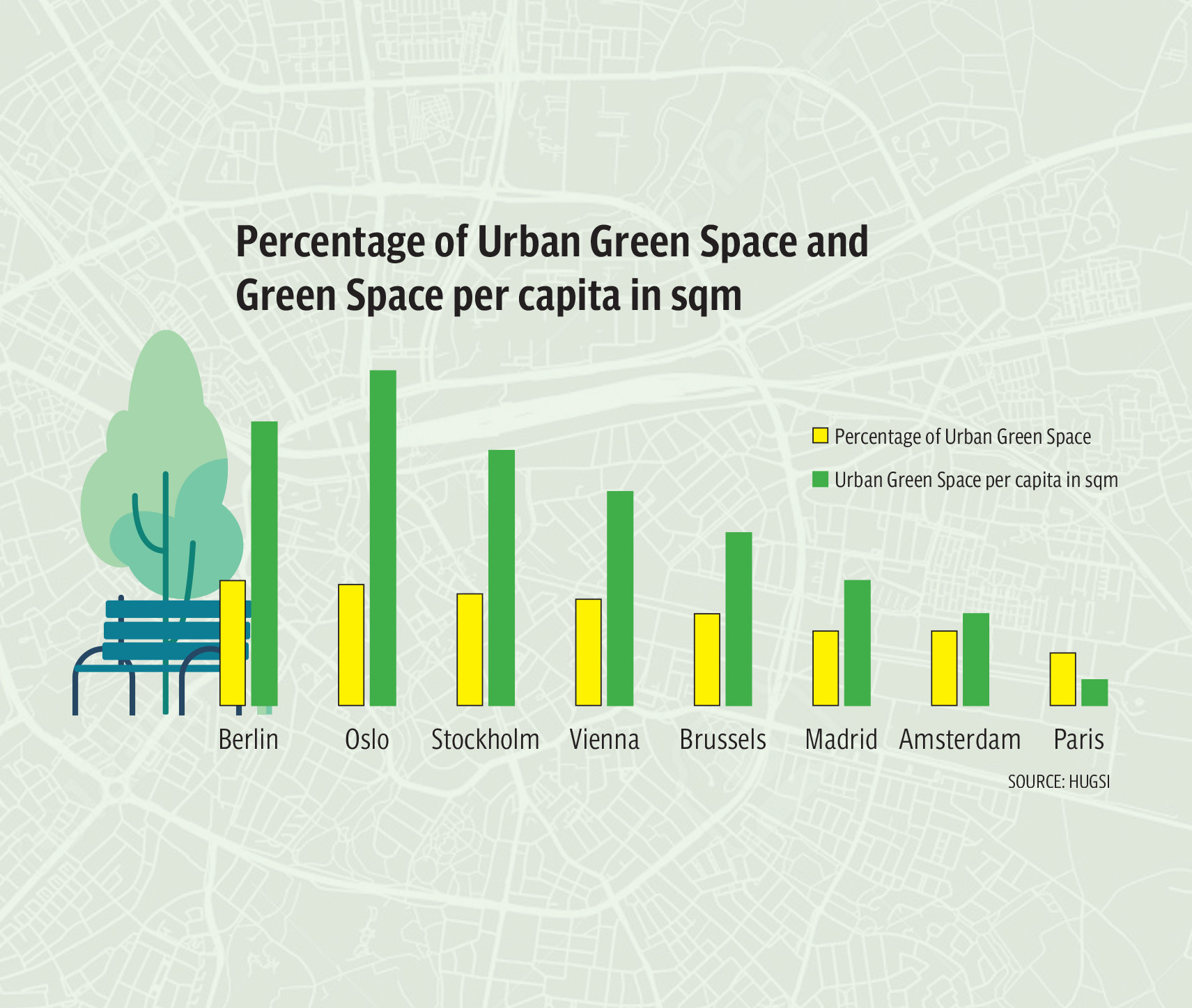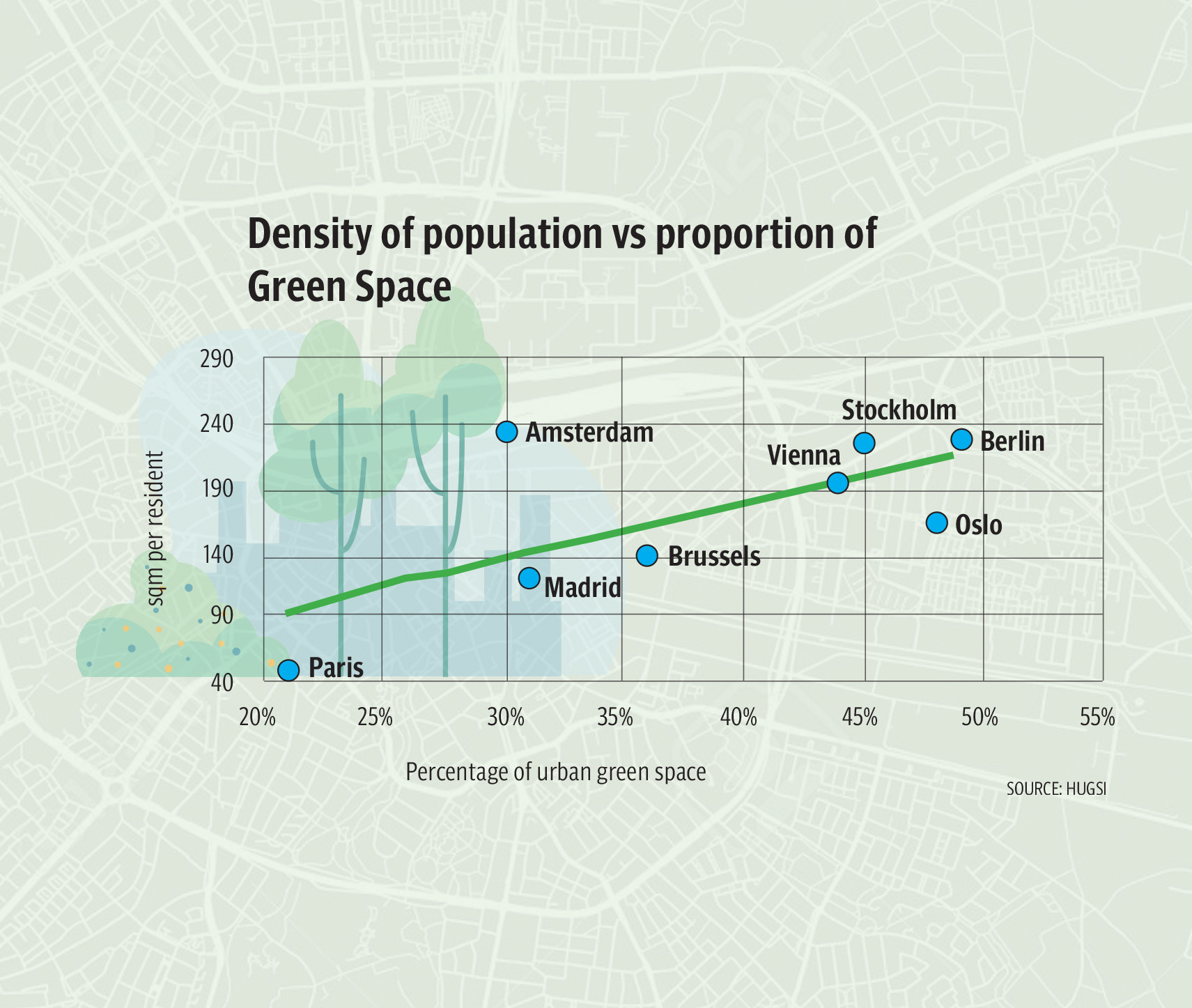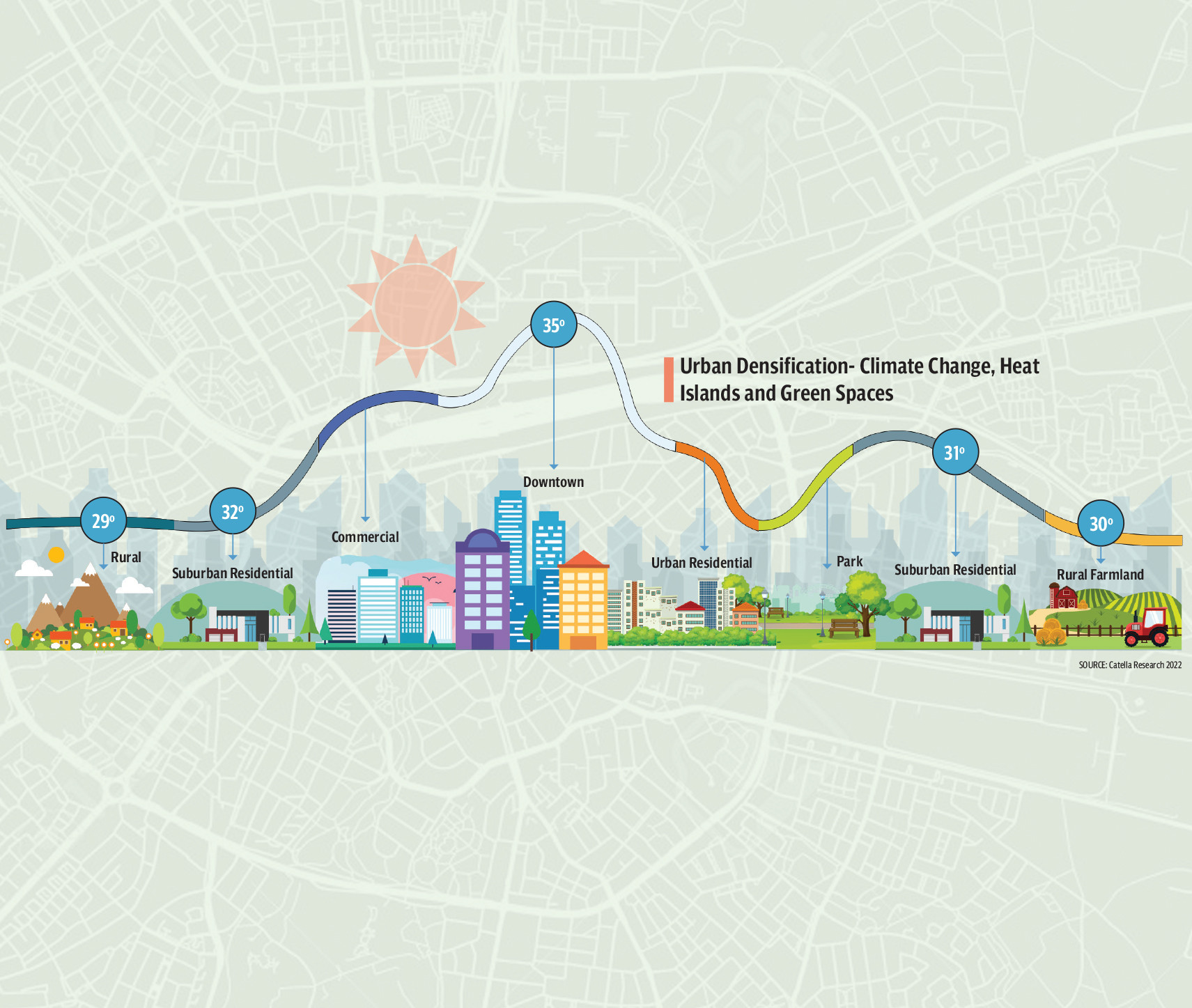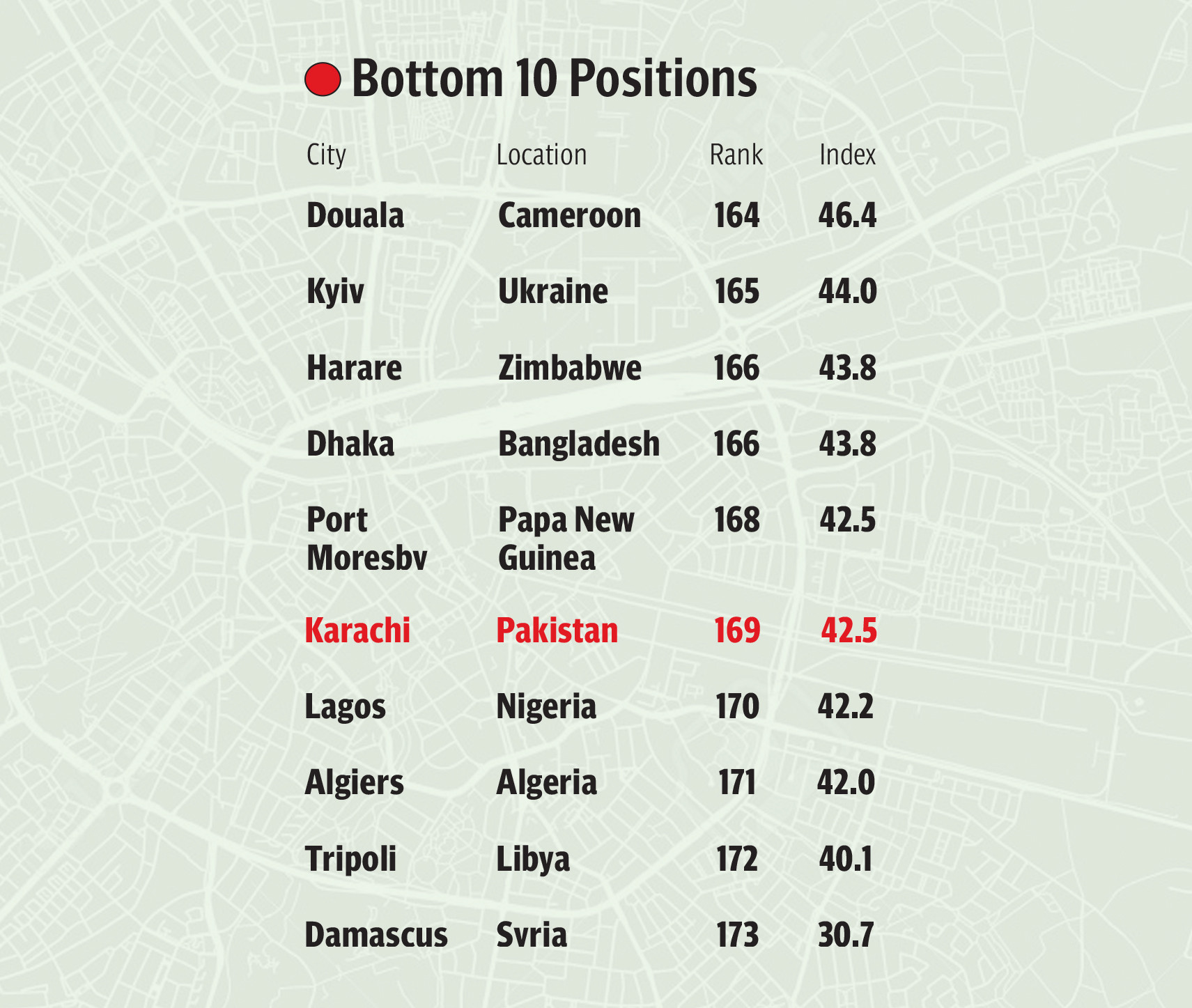Do you remember your grandparents telling you stories about the Karachi of yore when you were a child? Stories of how the streets of Karachi were washed every night until the 1960s? Or how foreigners used to visit the city for their summer vacations?
Nearly every Karachiite who grew up in the 1990s has grown up listening to those tales. Nearly all of us have ended up wondering what they were talking about. Because the Karachi that we inhabit today is nothing but roadsides cluttered with garbage, streets flooded with sewage water, and roads riddled with potholes.
A city that once ranked among elite company – that once counted itself as one of the most sophisticated and well-built metropolises in the world – has now plummeted to one of the least liveable cities. According to the 2023 Global Liveability Index published by the Economist Intelligence Unit (EIU), Karachi ranks 196th out of 173 cities, with only four cities from Nigeria, Algeria, Libya, and Syria trailing behind. This city, once rich in culture, diversity, economic opportunities, and living standards, was a major transit hub but has witnessed a decline over the last three decades, resulting in its current status as one of the 10 least desirable places to live.

Five things that make cities liveable
Due to several reasons that make it difficult to live in, Karachi has been listed as one of the least habitable cities in the world in numerous rankings. “There are five things that make a city liveable or desirable to be lived in: water, wastewater disposal, solid waste disposal, public transport, and electricity,” highlighted renowned economist Kaiser Bengali, “And unfortunately Karachi lacks in all five of them, which should be provided 24/7”.
Karachi suffers from several infrastructure issues, such as inadequate public transportation, sanitation, water supplies and medical facilities. These deficiencies can significantly affect residents' quality of life and hinder access to essential services. “The first factor that influences anyone's decision to live in a city is the income ratio, which Karachi does have. However, the second crucial point is access to basic services, which is an area where the city falls short,” Bengali explained.
The 2023 report examines five key aspects of the liveability index: stability, healthcare, culture and environment, education, and infrastructure. Karachi scores 42.5 out of 100 on this index. One of the primary reasons cities jeopardise their liveability is due to instability. Karachi, being one of the world's most populous cities, faces challenges like overcrowding and traffic stemming from rapid population growth. Overpopulation exacerbates issues such as air pollution, traffic congestion, and increases strains on public services and utilities. “People from various cities flock to Karachi in search of work because, despite numerous challenges, the city offers employment opportunities. Many are willing to overlook other deficiencies, such as basic necessities, because they can earn a living and provide for their families here,” the economist added.
Like many cities, Karachi displays significant economic disparities, with affluent neighborhoods situated next to impoverished informal settlements that lack essential services in stark contrast. These economic disparities not only affect overall liveability but also contribute to heightened social tensions in the metropolis.
“Comparing Karachi to other cities in Pakistan is challenging due to each city's unique dynamics. However, if we take Lahore as an example, it surpasses Karachi in all five factors crucial for liveability, putting Karachi at a disadvantage in comparison,” Bengali explained. According to him, water shortages, garbage accumulation and sewage water on roads are less of a common sight in Lahore than they are in Karachi. Electricity woes, on the other hand, are more or less the same across the entire country and do little to enhance Karachi’s liveability.

Transport and pollution
Additionally, a significant issue contributing to Karachi's placement on the list is its deficiency in providing adequate public transportation, a fundamental necessity for every individual. “The lack of public transportation makes it challenging for people to commute from one place to another. For instance, someone living in Nazimabad might rarely visit a restaurant in Clifton due to transportation constraints. However, with efficient transport and improved traffic conditions, they would likely frequent the restaurant more often. This, in turn, could boost the restaurant's economic prospects,” Bengali added.
Karachi grapples with numerous environmental challenges, such as air and water pollution, inadequate waste management, and vulnerability to natural disasters like flooding. These environmental issues can have adverse effects on public health and overall quality of life. Additionally, like many other major cities, Karachi faces issues like crime, traffic congestion, pollution, and overcrowding. These factors can influence how people perceive the city and their quality of life. Economist Muzammil Aslam pointed out that the city's status as one of the least liveable is attributed to various factors, including the prevalence of theft and snatching, lack of development work, and inadequate security for its residents. He further noted that although Karachi may be cheaper to live in, this does not necessarily translate to a better quality of life or sustainable long-term improvements.

Constrained by perceptions
Addressing the city's challenges requires comprehensive strategies that improve governance, security, infrastructure, and environmental sustainability. Additionally, it's important to consider that perceptions about Karachi may vary among individuals. For instance, if someone from a family residing outside of Pakistan sends $350, it translates to approximately Rs100,000, which can afford a decent lifestyle for a typical family in Pakistan. Considering that one can earn $300 to $350 in two to three days, this amount can significantly contribute to their financial well-being.
“On the flip side, even in countries like Saudi Arabia (KSA) and the United Arab Emirates (UAE), where the minimum wage for blue-collar jobs is around 2500 dirhams, equivalent to approximately 200,000 Pakistani rupees, the perception of what constitutes a liveable environment varies,” Aslam said. He added that Karachi's primary advantage lies in its status as an industrial city and its bustling port, which contribute to the availability of products at reasonable rates compared to other cities where costs escalate due to transport charges. Additionally, these costs often include middleman charges, whereas in Karachi, due to the presence of numerous markets and industries, competition is higher, resulting in lower prices for consumers. “The city offers employment opportunities like no other. For instance, in Lahore, although businesses exist, many people are underemployed due to the high population density of the province,” Aslam explained further.
 Growing crime and insecurity
Growing crime and insecurity
Despite the multitude of challenges making life difficult in Karachi, the city boasts several positive aspects, including its vibrant culture, diverse population, and significant economic importance. However, Karachi has faced periods of heightened crime, including targeted attacks and street crimes, as well as political and ethnic unrest. Concerns about security may impact residents' overall quality of life and sense of safety. Recent reports indicate that since January 1 this year, 35 people have been killed in various snatching incidents in the city.
“The primary reason people continue to reside in this city is often due to a lack of opportunity to relocate elsewhere. The alarming number of individuals killed during snatching incidents, without significant attention or action being taken, underscores the severity of the situation,” share Karachi resident Ariz Ali, who earns a healthy salary from his job at a multinational company. “No matter what I earn or how much tax I pay, the state of roads, the security situation, and the absence of basic education and healthcare remain unaddressed. The uncertainty the moment I step out of the house is pervasive,” he lamented.
 Ali shared that his cellular phone has been snatched from him at gunpoint at least four times in the last seven years. “And there is nothing I can do about it!” Expressing his feelings of helplessness, he recounted purchasing a car two years ago, only to find that within a year, his new vehicle required extensive servicing due to the rough and uneven roads. “Just imagine spending millions to buy a new car, only to find yourself spending more money within a year due to the city's lack of good infrastructure,” he added.
Ali shared that his cellular phone has been snatched from him at gunpoint at least four times in the last seven years. “And there is nothing I can do about it!” Expressing his feelings of helplessness, he recounted purchasing a car two years ago, only to find that within a year, his new vehicle required extensive servicing due to the rough and uneven roads. “Just imagine spending millions to buy a new car, only to find yourself spending more money within a year due to the city's lack of good infrastructure,” he added.
Karachi is a vibrant, multifaceted city renowned for its lively cultural scene, bustling streets, and deep historical roots. It serves as a cultural melting pot where various ethnic groups and communities have made their imprint. However, the city's unwillingness to improve living conditions has resulted in it appearing as though it has stagnated, even regressed, since the 1960s. “Forget competing with any foreign cities; compared to other cities in our country, Karachi seems to have stopped in its developmental tracks since the 1960s. Meanwhile, all other cities have embraced modern infrastructure,” Ali said, venting his frustrations with the city he calls home.

The index at a glance
While Karachi’s situation may remain bleak, the 2023 Global Liveability Index highlighted a silver lining worldwide. According to the report, a drawdown in Covid restrictions meant the survey conducted between February 13 and March 12 last year ‘shows a noticeable improvement across the world’.
“A shift back towards normality after the Covid-19 pandemic and incremental improvements in liveability made by many developing countries have been the biggest drivers of changes in EIU’s global liveability rankings,” the 2023 report noted. “The average index score across all 172 cities (excluding Kyiv) in our survey has now reached 76.2 out of 100, up from 73.2 a year ago.”
The 76.2 average is the highest score in 15 years for the original comparable list of 140 cities, the EIU report stated. “Even at the bottom of our rankings, cities such as Lagos (Nigeria) and Algiers (Algeria) have gained ground, with some improvements in their healthcare and education systems,” it read.

According to the report, Healthcare scores have improved the most, with smaller gains for education, culture and environment, and infrastructure. It added that only stability has seen a small decline, reflecting increasing perceptions of corruption and civil unrest in many cities amid a cost-of-living crisis, as well as an uptick in crime in some cities. “In many cities, such as Athens (Greece), stability scores have fallen this year because of greater civil unrest. Elsewhere, inflation, dissatisfaction with working conditions and occasional shortages of goods have sparked wage strikes and protests.”
Despite their dominant position, European cities dominated the list of the top ten fallers down the rankings, which also includes two US cities, San Diego and Los Angeles, the 2023 report stated. “Edinburgh (UK), which entered our liveability survey for the first time in 2022 in a respectable 35th position, has now tumbled to 58th. Other UK cities have done poorly in the rankings this year, too, with Manchester down by 16 places and London down by 12.” Although none of these cities has seen a particularly sharp decline in their index scores, the report noted that “they have failed to make the gains that many other cities, particularly those in Asia, have made in the past year.”
Overall, all regions have benefited from the increase in average scores in the 2023 liveability survey. “However, war-ravaged Damascus (Syria), the lowest-ranked city in our survey, has seen no improvement in its liveability scores despite the regional political comeback of its president, Bashar al-Assad,” the report added.
